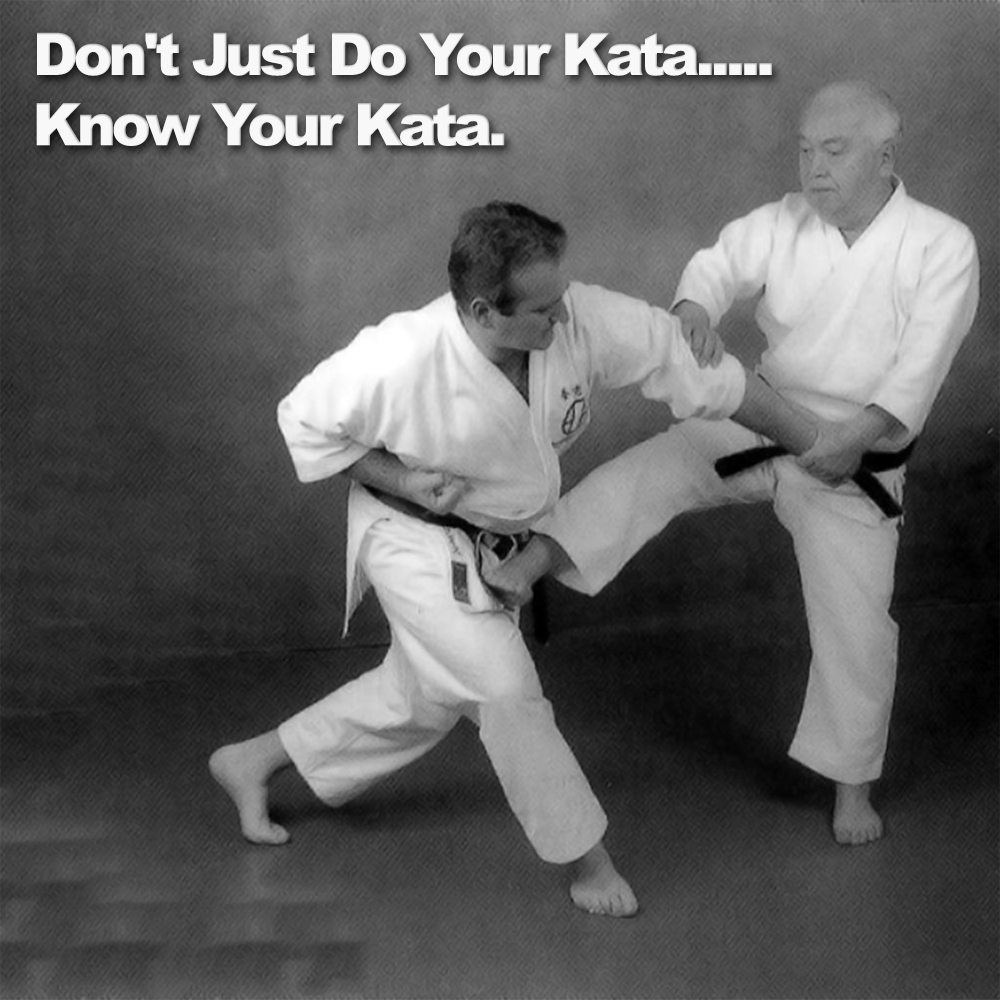
(2 minute 6 second read)
I’ve been writing articles for several years now, and probably the most commented and contentious subject of all that I write about has to be Kata.
.
People just don’t get it. Sadly, there is widespread misunderstanding about this centuries old tradition.
.
I can’t blame them, as today most kata are practiced as an aside, something to pass a grade, or perhaps to demonstrate different karate techniques, or to compete in a competition.
.
Opinions about the significance of kata vary widely and strongly. For some, kata embodies the essence of martial arts, representing their very core. Conversely, others see it as a futile endeavor, devoid of any real value.
.
It’s probable that instructors and students haven’t had the opportunity to learn properly or have been misled.
.
And there’s a common consensus among many people that proficiency in kata isn’t essential for combat prowess, as numerous highly successful disciplines omit kata from their training….. And of course they would be right.
.
So why do “traditional systems” still prioritize kata training if it’s not a prerequisite for combat effectiveness?
.
Kata serves as an effective means to document techniques, drills, and fundamental principles. Centuries after the original creators imparted their combat methodologies to their students, modern karate practitioners possess a tangible repository of their teachings.
.
Nevertheless, the perception of kata has shifted over time, moving from its origins as a treasure trove of potent fighting techniques, to being commonly viewed as an athletic or aesthetic pursuit, often divorced from practical combat applications.
.
Despite this evolution in perception, for karate practitioners keen on preserving the authentic civilian fighting system, kata serves as a real connection to that heritage.
.
However, for karate to function as a practical combat system, kata must be actively studied, rather than merely practiced. Gichin Funakoshi regarded kata practice without the application in live situations as “useless” (Karate-do Kyohan).
.
Many other masters echoed this sentiment, criticizing practitioners who focus solely on the aesthetic aspect of kata performance.
.
In my view, without a thorough examination of its practical application, kata practice becomes devoid of significance. It’s crucial to remember that kata were originally devised to document fighting techniques and principles.
.
Kata was the culmination of lessons already learned; the two-man drills, they were not created as standalone performances.
.
Those pioneers were fighting men, not sportsmen fighting within an arena. Their systems worked and we know this from historical evidence.
.
Today, kata are time capsules of sorts, believed to encapsulate the collective wisdom of the pioneers who first developed this art form.
.
Instead of focusing on technical limitations or misunderstandings about kata, why not strive to discover applicable real-world self-defense remedies that can be incorporated into your own training.
.
In fact, the pioneers of karate and its kata did exactly that. They designed kata to be not a form, not a solo performance, but applications of self-defense principles that were already learned with a partner. So instead of seeking faults, why not strive to discover functional remedies.
.
Kata is Karate and Karate is Kata.
.
